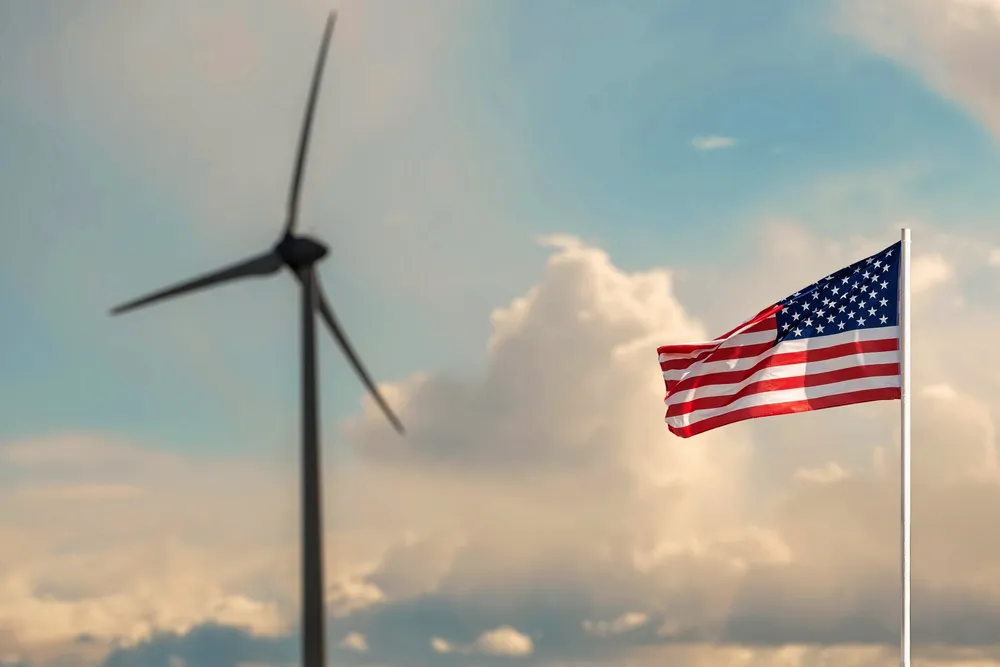Wind farm power prices surge despite Trump efforts to quash industry
IntelStor said the number of unprofitable projects plummeted as offtake prices rose, offering a lifeline to industry amid Congressional debate to slash critical tax credits

US wind's financial performance improved in 2024 as average power purchase agreement (PPA) price rose, leading to a plunge in the number of unprofitable projects and raising prospects for the industry, reports research consultancy IntelStor.
The amount of capacity expected to lose money through its life last year dropped to 14.3GW from 20.3GW in 2023, a nearly 30% decline as average PPA prices surged to some $56/MWh, up from $36.76/MWh in annual comparisons.
The US has some 153GW of installed capacity, including around 174MW of offshore wind, according to industry advocacy group American Clean Power Association, supplying some 10% of total power demand. The nation is expected to add nearly 8GW of capacity this year.
IntelStor based its analysis on publicly available information from the Energy Information Administration (EIA) and Lawrence Berkeley National Laboratory, both under the Department of Energy, as well as independent system operators (ISOs) and project owners, according to CEO Philip Totaro.
Despite rising PPAs, the industry still relies heavily on the Production Tax Credit (PTC) included in landmark climate legislation the Inflation Reduction Act (IRA) that offers $27.5/MWh for the first decade of asset life, assuming wage and apprenticeship rules are met.
On average, PTC comprised nearly a quarter of the revenue generated by onshore wind projects for a total of $66bn, according to IntelStor.
The consultancy found the impact of the PTC “on overall revenue to asset owners has been reduced since 2023 due to rising average” PPAs, but the weighting of tax credit earnings during the first 10 years of asset life results in some owners being “more highly dependent on PTC revenue as a percentage of total revenue.”
Projects were able to improve economics through refinancing and/or repowering using better technology, as well as PPA renegotiation.
Some developers signed very cheap PPAs to fast-track their interconnection reviews and begin collecting PTC, according to Totaro.
“You want to get steel in the ground or water so that you can qualify for the PTC to start collecting on that, because you can always renegotiate the PPA later, and in some cases, you have to,” he added.
'Big beautiful bill'
In the Senate’s version of the ‘big beautiful’ budget bill pushed by President Donald Trump, for projects that begin operations in 2026, the credits would step down to 60% of their present value, and 20% in 2027. After then, they would sunset.
While this could have dramatic impacts on the sector, IntelStor noted that projects that rely heavily on PTC revenue “also tend to show a pattern of poor performance on net profit.”
“This is mainly due to the PTC being used to compensate for a project which would have never been built without it because the wind resource would not justify a capacity factor high enough to warrant a market average PPA,” IntelStor asserted.
Instead, with oil prices suddenly uncertain amid rising Middle East tensions and recessionary risks rising, IntelStor forecasts interest rate cuts that could promote renewables despite tax credit risk.
Coupled with the PPA price stability, “it is highly likely that many investors who have currently been shunning wind energy and solar power investments will come back into the market to take advantage of the beneficial project economics,” the consultancy noted.
(Copyright)